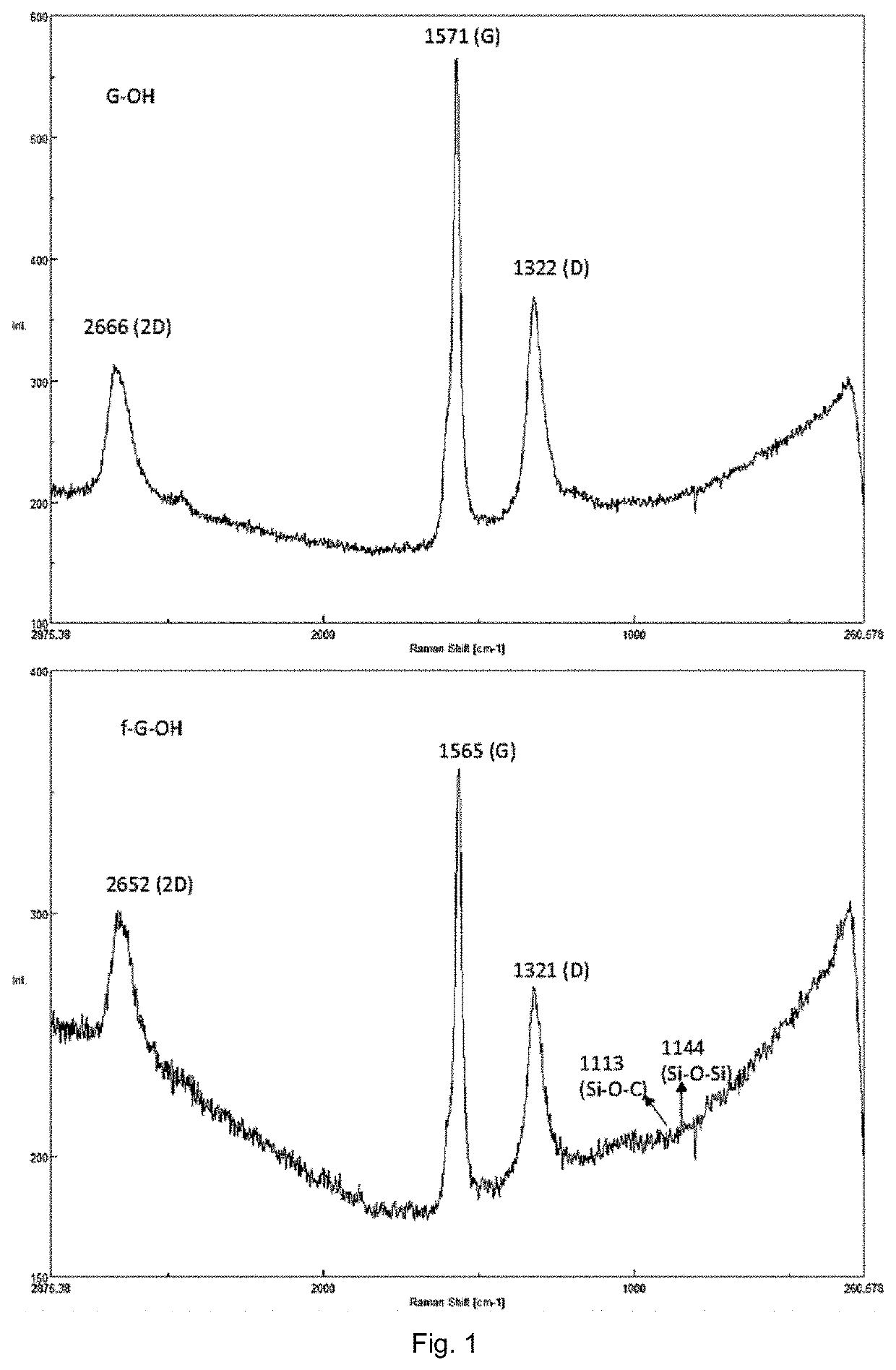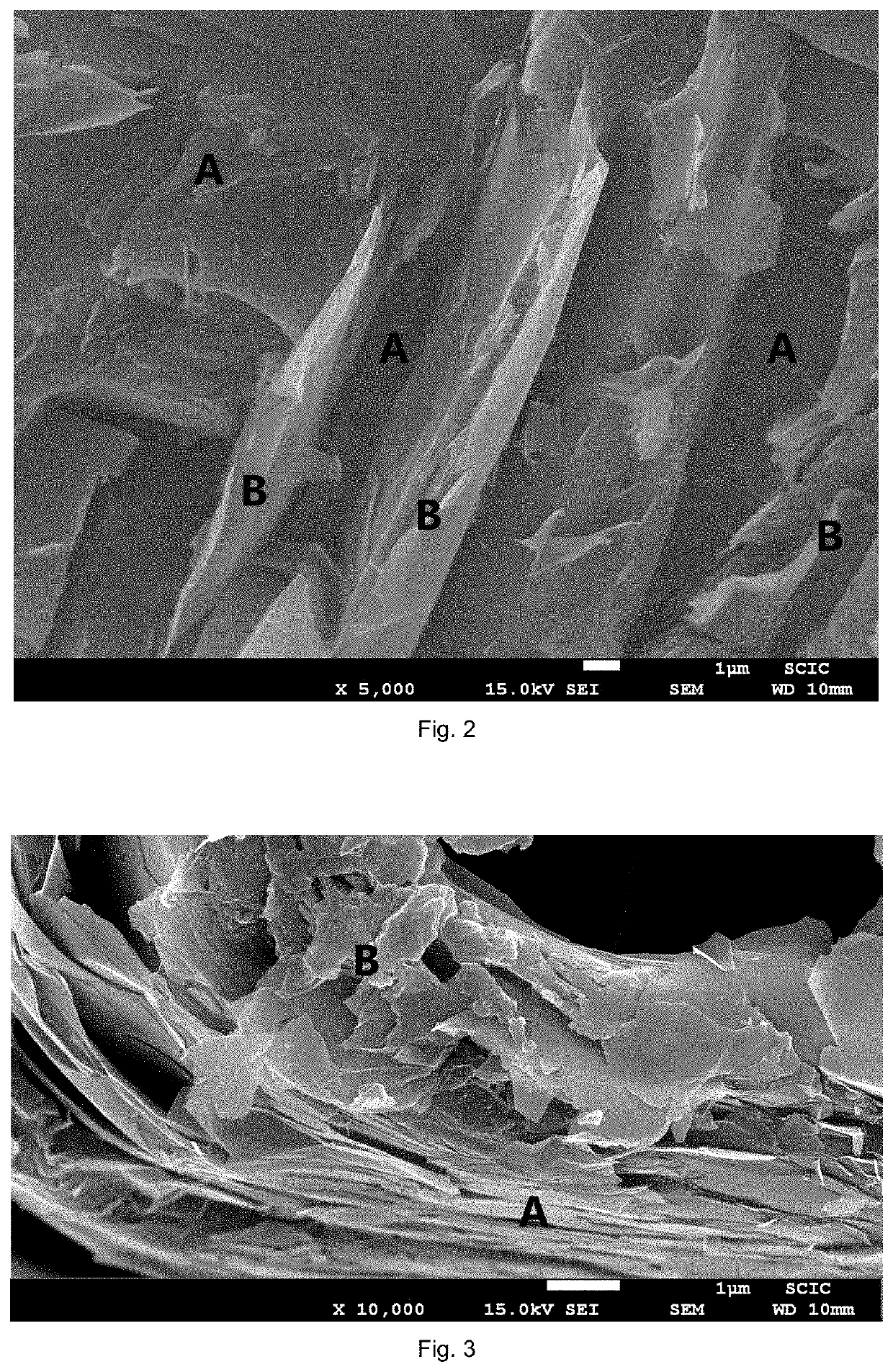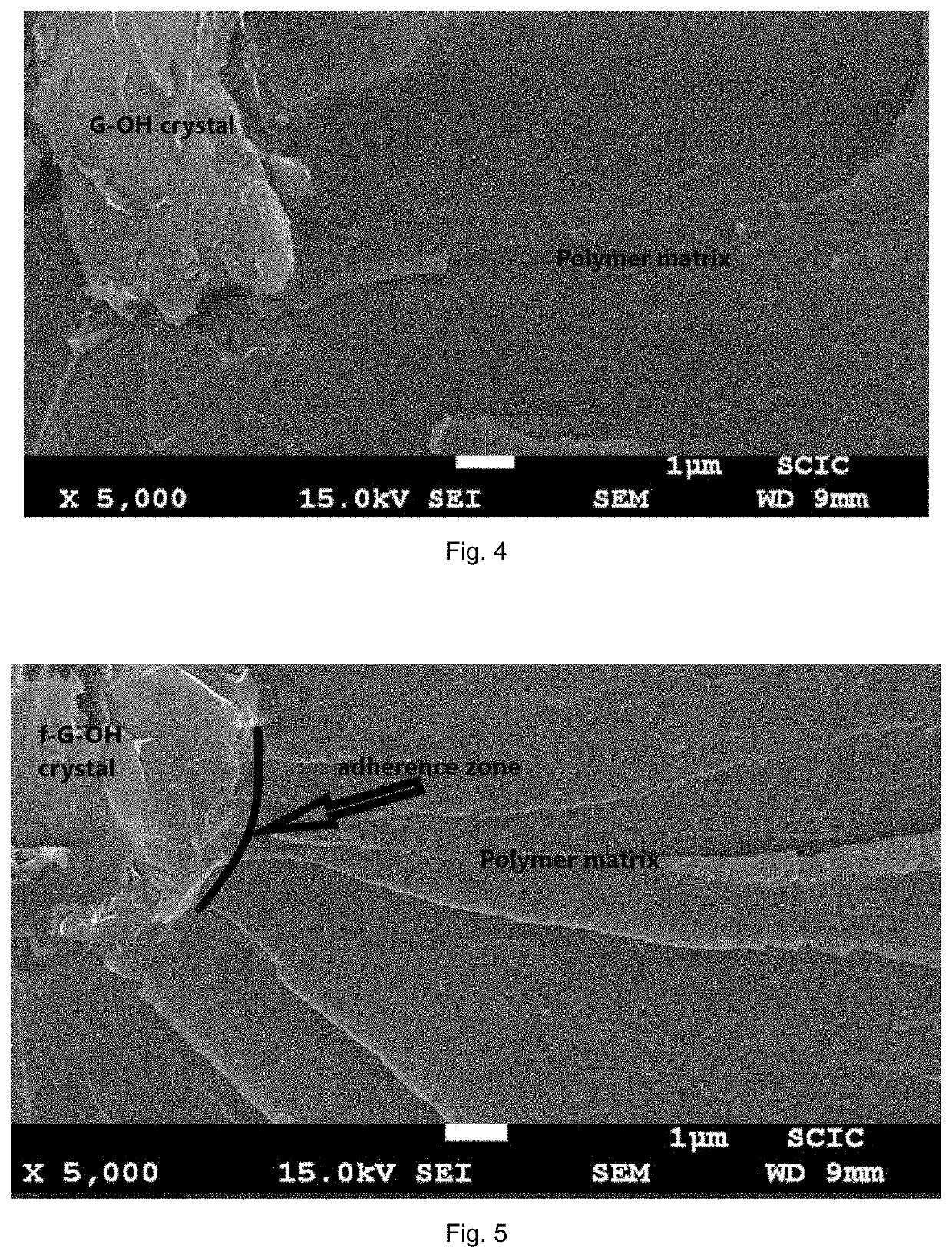Compact compound comprising silanized hydroxyl graphene with thermosetting polymer
a technology of silanized hydroxyl graphene and thermosetting polymer, which is applied in the direction of coatings, chemistry apparatuses and processes, polyester coatings, etc., can solve the problems of uncontrolled proportion of these groups, poor surface chemistries control, and increasing the proportion of graphen
- Summary
- Abstract
- Description
- Claims
- Application Information
AI Technical Summary
Benefits of technology
Problems solved by technology
Method used
Image
Examples
example 1
[0079]Obtaining of the Hydroxylate Graphene.
[0080]Graphite flakes were processed using a Couette-Taylor flow reactor. In an embodiment, 100 g of graphite flakes and 10 g of 2M NaOH were added to 300 ml of sulfuric acid (H2SO4 98%). Then, 80 g of potassium permanganate (KMnO4) was slowly added to this mixture at 10° C. or lower and the mixture was stirred for 30 min. The mixture was injected into the flow reactor. The rotating speed of the inner cylinder was 1000 rpm during 60 min to obtain a brown-colored pasty slurry. For a workup, 400 ml of purified water and 100 ml of peroxide, H2O2 30%, were added to the mixture, and then stirred for 45 min. For purification, a filter press system was used to separate hydroxylate graphene (G-OH) and impurities. Then, non- or under-hydroxilated graphitic particles were precipitated out by further centrifugation at 4000 rpm for 30 min. G-OH slurry and a large volume of distilled water was continually fed into the system until the water and impurit...
example 2
[0082]Silanization of the Hydroxylate Graphene
[0083]Firstly, the organosilane 3-methacryl oxypropyl-trimethoxysilane (MEMO) obtained from Dynasilan was hydrolysed in a water solution in acid environment through the addition of between 0.05 ml and 0.015 ml HCl 33% to achieve pH=1. In this case, 3 g of MEMO was dispersed in 150 ml of distilled water and 1-4 drops of HCl 33% are added. The aqueous solution is agitated during 10 minutes. Next, 150 g of G-OH were added progressively maintain the magnetic agitation during 15 minutes. Then, the combination was realized through a 30 minutes process of sonication (with 20 kHz frequency) maintaining the mixture in vibration. Said 30 minutes process are achieved by following fifteen times alternation of 2 minutes cycles of operation and shutdown.
[0084]After silane hydrolisis and bonding with the hydroxil graphene (G-OH), a nanohybrid silane functionalizated graphene (f-G-OH) of size 20-30 nm is obtained.
[0085]The resulting functionalized G-OH ...
example 3
[0086]Synthesis of the Thermosetting Polymer with the Silane-Functionalized Hydroxyl Graphene (f-G-OH) with Different Wt % of the (f-G-OH) Used.
[0087]To prepare the composite at different wt % (f-G-OH), polyester resin (ISO-NPG provided by SUMARCOP,) was bonded with functionalized G-OH (f-G-OH) according to the table 2 to obtain samples with different percentage of the silanizated G-OH relative to the polymeric resin.
TABLE 2Examples preparedResinef-G-OHf-G-OHpMEKCo-Octosample(g)(g)%(g)(ml)11300 0%2.6021301.3 1%2.6031301310%2.6041302620%2.6051303930%2.60.361305240%2.60.571305945%2.63.581306550%2.65
[0088]The resin was dispersed progressively during 15 minutes under magnetic vibration. To initiate the polymerization reactions, methyl ethyl ketone (pMEK type K1 from AKZO) and 1-5 wt % of Cobalt Octoate 6% are added (depending on the G-OH proportion), and stirred during 2 minutes at 40° C. The combination was sonicated during 30 minutes (with 20 kHz frequency) maintaining the mixture in ...
PUM
| Property | Measurement | Unit |
|---|---|---|
| size | aaaaa | aaaaa |
| size | aaaaa | aaaaa |
| temperature | aaaaa | aaaaa |
Abstract
Description
Claims
Application Information
 Login to View More
Login to View More - R&D
- Intellectual Property
- Life Sciences
- Materials
- Tech Scout
- Unparalleled Data Quality
- Higher Quality Content
- 60% Fewer Hallucinations
Browse by: Latest US Patents, China's latest patents, Technical Efficacy Thesaurus, Application Domain, Technology Topic, Popular Technical Reports.
© 2025 PatSnap. All rights reserved.Legal|Privacy policy|Modern Slavery Act Transparency Statement|Sitemap|About US| Contact US: help@patsnap.com



